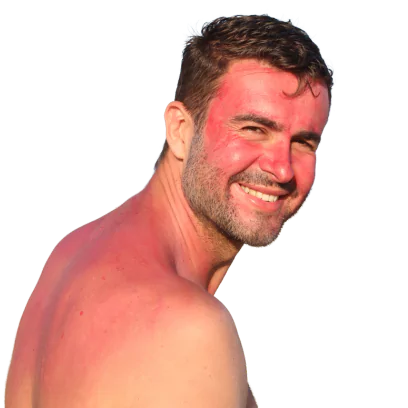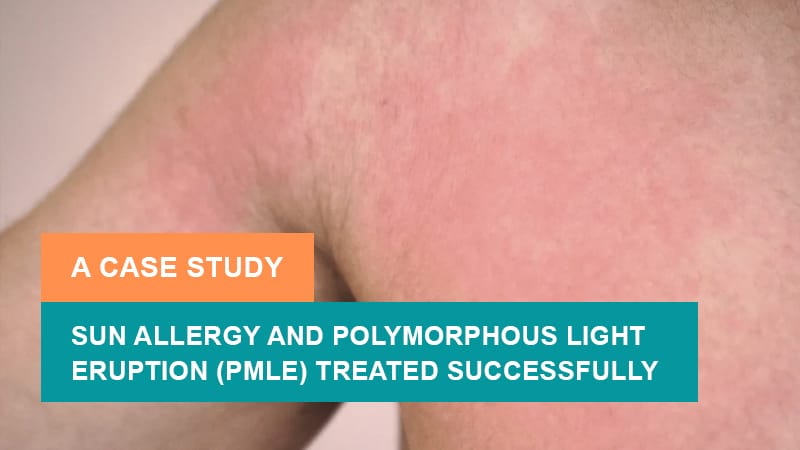On This Page
Overview
What is Sun Tan?
Damage to skin by exposure to ultraviolet rays of the sun is a common problem today taking to consideration the current scenario of rising temperatures and scorching heat all over the globe, especially in tropical and temperate zones.
Excessive UV radiation causes skin burn and damage to DNA. Skin tanning occurs as a result of excessive release of melanin by melanocytes of the skin triggered by UVA and UVB frequencies of sun radiation.
The extent of damage caused on skin depends on the type of skin as well as the amount of time of exposure. Moderate sun tan may occur in less than 15 minutes of exposure but symptoms usually show in 30 minutes while the pain is usually extreme within 6 to 48 hours of exposure and may subside completely within 3 to 8 days following proper Ayurvedic management.
Symptoms of Sun Tan
- A common presentation of sun tan is red, darkened, sometimes swollen, painful skin associated with a burning sensation.
- Small fluid-filled blisters.
- Mild symptoms include darkening, peeling, or itching of the skin in sunlight-exposed body parts like the face, arm, legs, neck, feet, hand, and back.
- Severe sun tan causes burns and blistering on the skin associated with fainting, unconsciousness, fever, chills, nausea, weakness, vomiting, etc.
- In very severe cases symptoms of shock like low blood pressure, fainting, and extreme debility may be noticed.
Etiology
The cause of tanning primarily includes extreme exposure to sunlight as well as artificial light like tanning lamps found in tanning beds.
Diagnosis
Diagnosis is clinically based on the history of exposure as well as the examination of the skin. Vitals have to be stabilized in severe cases.
Management
For milder cases, application of Aloe Vera gel, taking a cold shower, cold compress, wearing loose clothing is sufficient to alleviate the symptoms.
In severe cases, proper Ayurvedic management mentioned as per IAFA is suggestive, which includes internal and external medications.
Preventive Measures
The best way to avoid sun tan is to minimize exposure and duration of exposure by following methods:-
- Wear broad-spectrum Ayurvedic sunscreen of appropriate SPF (sun protection factor).
- Use a wide-brimmed hat, sunglasses, and well-covered clothing while going out.
- Avoid going out in the hottest part of the day and opt for shady locations while outside.

“Following Ayurveda will surely help in better healing and recovery through safe and complete nature-friendly treatment modalities. IAFA is the best destination in the world for Sun tan management and associated symptoms.”
Reach Institute of Applied Food Allergy® and add a total rejuvenation to your skin!!!
– Dr. Sahil Gupta (B.A.M.S., M.H.A.)
Ayurvedic Allergy Specialist
CEO & Founder of IAFA®
At last, Easier Sun Tan Management

Trusted by
More than 90,000 Patients

Convenient
at-Home Treatments

9.2 / 10
Customer Satisfaction Score
Ayurvedic Treatment of Sun Tan
Sun tan can be correlated to kushta mentioned in Charaka Samhitha chikitsastana chapter 7 kushta prakarana.
Certain kushta is characterized by daha (burning sensation), kandu (itching), ruja (pain), raga (redness), and lesions may be correlated Sun tan.
This condition is caused by vitiation of pitta dosha, more specifically pitta dosha increase.
Treatment Principle
- Pitta reducing chikitsa
- Nidana parivarchaka chikitsa – avoiding exposure to sunlight
Internal Medications
- Tiktakam Kasayam
- Saribadi Churnam
- Pravala Pisti
- Shadangapaneeya / Usheerajala / Sharibapaneeya to drink frequently
External Application
- Shatadoda Ghrita
- Kumariswarasa / Aloe vera gel
- Sharibadi Churna with honey
- Rakta Chandana Churna
- Sweta Chandana Churna
After the acute phase is stabilized proper skincare, medications for improving skin health may be followed for alleviating the effect of past exposure as well as preventing new sun tan.
Single Herbs Used in Ayurveda
- Kumari (Aloe vera)
- Rakta chandana (Pterocarpus santalinus)
- Sweta chandana (Santalum album)
- Shariba (Hemidesmus indicus)
Diet Management for Sun Tan
Pathya (Do’s)
- Consume tender coconut, fresh fruit juices, and light vegetarian food.
- Include Shariba, Usheera, Coconut, etc. in the diet.
Apathya (Don’ts)
- Avoid exposure to direct sun, heat, radiation, etc.
- Avoid excess oily, spicy food and abhishyandi ahara (excess unctuous food)
Yoga for Sun Tan
- Halasana
- Sarvangasana
- Uttanasana
- Trikonasana
- Bhujangasana
- Tadasana
Pranayama
- Shitkari pranayama – helps in alleviating vitiated pitta.

Frequently Asked Questions
Question: What is Sun tan?
Answer: Damage to skin by exposure to ultraviolet rays of the sun is called as Sun tan.
Question: What are the common symptoms of Sun tan?
Answer: Common symptoms of sun tan are red, darkened, sometimes swollen, and painful skin associated with a burning sensation.
Question: Is there any Ayurvedic remedy for Sun tan?
Answer: Yes, Ayurveda has successful treatment for Sun tan through natural friendly measures.
Skin is the largest organ of body as well as the most important physical barrier of immunity needs to be protected and cared for achieving better immune status and health. Both internal and external medication is equally important in treatment of any skin disease as skin is the extrinsic manifestation of health status of the body as a whole. Ayurveda stresses the importance of maintenance of proper mental health in treatment of skin diseases for complete healing.
Following Ayurveda will surely help in better healing and recovery through safe and complete nature friendly treatment modalities. IAFA is the best destination in the world for Sun tan management and associated symptoms.
Was this Page Helpful?
So IAFA Root-Cause Treatment for Sun Tan is Just 3 Steps Away!

01. Connect With Us
Share your history of illness or Book your appointment

02. Consult With Us
Dr. Gupta a certified Ayurvedic Allergist Consultant

03. Root Cause Treatment
Get an accurate diagnosis, medicines, diet & lifestyle change
Real Case Studies – Successfully Treated Patients
Real Case Studies of Successfully Treated Patients from All Around the World by IAFA Ayurveda®

9 Year Old Female Patient Recovered from Chronic Allergic Bronchitis – A Case Study
This case study presents a 9-year-old female patient who has successfully recovered…

12-Year-Old Child Recovered from Sun Allergy and Polymorphous Light Eruption (PMLE) – A Case Study
This is a case study of a 12-year-old child who has successfully…

40-Year-Old Female Patient Recovered from Dyshidrotic Eczema and Onychomycosis – A Case Study
This case study highlights the successful recovery of a 40-year-old female patient…

40-Year-Old Female Patient Recovered from Urticaria and Angioedema – A Case Study
This case study focuses on a 40-year-old female patient who has successfully…
Read More Articles

Mast Cell Diseases
Discover Ayurvedic treatment for Mast Cell Diseases, including types, causes, symptoms, and…

High Immunoglobulin-E (IgE) Levels
Discover Ayurvedic treatment for high Immunoglobulin-E (IgE) levels. Learn about the causes,…

Histamine Intolerance
Discover Ayurvedic treatment for histamine intolerance, its causes, symptoms, and natural treatment.…













